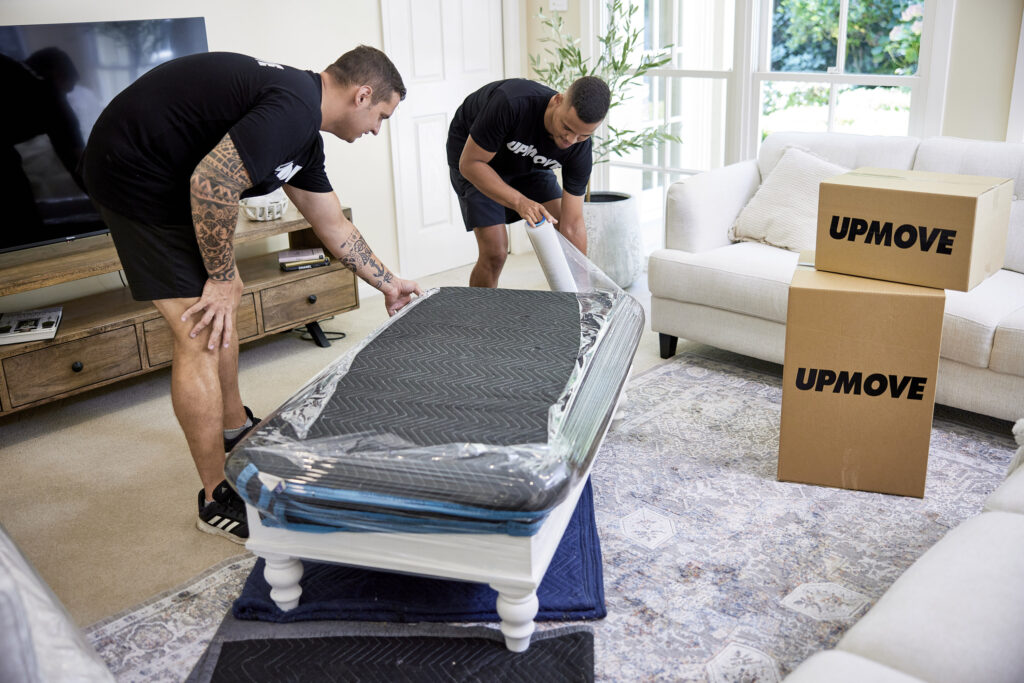
Moving heavy furniture can be a real hassle, especially when you’re trying to avoid damaging your walls, floors, and doors. A careless scrape or an unexpected dent can be costly to fix, but with the right approach, you can keep your home looking pristine. Here’s how to move large, bulky items safely while protecting your space.
Cover and Pad Your Furniture
Before you start lifting, make sure your furniture is well-protected.
- Use blankets or furniture pads – These provide a soft barrier between the furniture and your walls or doors if there’s an accidental bump.
- Bubble wrap sharp corners – Items with pointed edges, such as cabinets and tables, can easily dent or scratch surfaces. Wrap them up to avoid damage.
- Stretch wrap for delicate finishes – If your furniture has polished or painted surfaces, covering them with plastic wrap can prevent scuffs and chipping.
Lay Down Floor Protection
Floors bear the brunt of moving heavy furniture. A single misstep can lead to scratches, dents, or even broken tiles—especially in Brisbane homes, where timber floors are common.
- Use furniture sliders – These handy tools reduce friction and let you glide heavy items across hard floors without scratching them.
- Lay down rugs or cardboard – If you don’t have sliders, old rugs, towels, or flattened cardboard boxes work just as well to create a barrier.
- Avoid dragging furniture – Always lift where possible. If you must push something, use a moving dolly to distribute the weight evenly.
Protect Your Walls and Corners
Narrow hallways and tight corners are danger zones when shifting furniture.
- Foam corner guards – These act as a cushion to prevent dents and chips in plaster or painted surfaces.
- Use painter’s tape and cardboard – Stick cardboard to walls in high-risk areas where you’re likely to bump into them.
- Have a spotter – An extra set of hands can guide the furniture safely and prevent unnecessary scrapes.
Safeguard Your Doorways
Doorways can take a beating when moving large items through them, especially in older Queenslander-style homes with narrower frames.
- Remove doors if necessary – If space is tight, taking the door off its hinges gives you extra room to manoeuvre.
- Wrap door frames – Use towels or foam padding to prevent chips and scratches when passing through.
- Measure before moving – Always check whether your furniture fits through before attempting to force it.
Use the Right Moving Equipment
Having the right tools can make moving heavy furniture much easier and safer.
- Moving straps – These help distribute weight more evenly, reducing the risk of dropping and damaging both the furniture and your home.
- Dollies and trolleys – Ideal for transporting large pieces without scraping the floor.
- Gloves with grip – A good pair of gloves gives you better control and helps prevent slips. Having the right tools can make moving heavy furniture much easier and safer. If you’re not confident handling bulky items, Brisbane removalists have the experience and equipment—like dollies, moving straps, and protective padding—to transport your furniture without damaging your home.
Having the right tools can make moving heavy furniture much easier and safer. If you’re not confident handling bulky items, Brisbane removalists have the experience and equipment—like dollies, moving straps, and protective padding—to transport your furniture without damaging your home.

Final Thoughts
Taking a few extra precautions can save you a lot of hassle and costly repairs when moving heavy furniture. With the right padding, protective layers, and moving techniques, you can keep your walls, floors, and doors in top condition while getting your furniture safely to its new spot.
